Makemake Statistics
This page lists data and statistics about the dwarf planet Makemake.
| Diameter: |
1,300-1,900 km
(808-1,181 miles)
[0.102-0.149 x Earth's] |
|
Orbital Semimajor Axis:
(average distance from Sun) |
45.791 AU
(Earth = 1 AU) |
| Mass: |
~4 x 1021 kilograms
(0.00067 x Earth's) |
|
Orbital Eccentricity: |
0.159 |
| Density: |
~2,000 kg/m3
(0.363
x Earth's) |
|
Maximum
Distance from Sun: |
53.074 AU
( 7.940 billion km or
4.934 billion miles ) |
| Surface Gravity: |
~0.5 m/s2
(0.051 x Earth's) |
|
Minimum
Distance from Sun: |
38.509 AU
( 5.761 billion km or
3.580 billion miles ) |
| Surface Temperature: |
30 K
( -240° C or
-406° F ) |
|
Minimum Distance from Earth: |
37.5 AU
( 5.61 billion km or
3.49 billion miles ) |
| Tilt of Axis: |
unknown |
|
Orbital Inclination:
(tilt of orbit plane) |
28.96° |
Rotation Period about Axis:
(length of Makemake's day) |
unknown |
|
Revolution Period about the Sun:
(length of Makemake's year) |
309.88 years |
| |
|
|
Satellites: |
known |
| |
 Comparative Planetary Statistics -- in table form
Comparative Planetary Statistics -- in table form
 Comparative Orbital Statistics -- in table form
Comparative Orbital Statistics -- in table form
You might also be interested in:
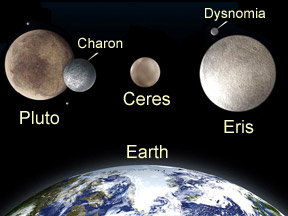
In 2006 the International Astronomical Union (IAU) approved a new classification scheme for planets and smaller objects in our Solar System. Their scheme includes three classes of objects: "small solar
...more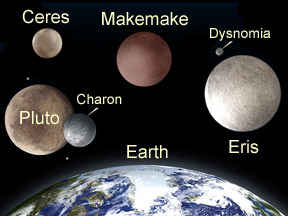
Makemake is a dwarf planet in our Solar System. Makemake was discovered on March 31, 2005 by a team of astronomers led by Mike Brown of the California Institute of Technology. The International Astronomical
...more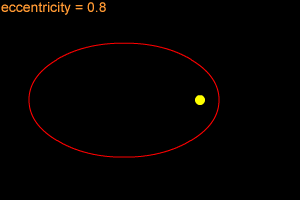
Most objects in orbits move along an elliptical path. An ellipse is a shape that can be thought of as a "stretched out" circle or an oval. An ellipse can be very long and thin, or it can be quite
...more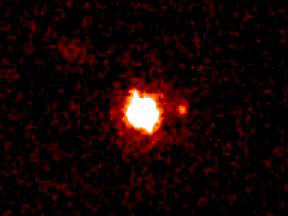
Eris is a dwarf planet that was discovered in 2005. Eris is a trans-Neptunian object (TNO) that orbits the Sun on the frozen fringes of our Solar System beyond the Kuiper Belt. Eris takes 557 years to
...more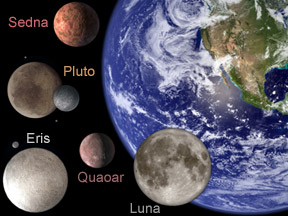
It may surprise you, but astronomers don't really have a good definition of a "planet". Because of this, Pluto is at the heart of a controversy about its status. Is Pluto a planet, or isn't it? Scientists
...more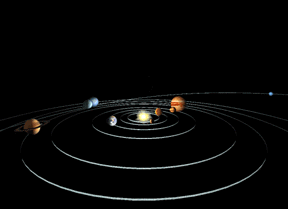
Scientists believe that the solar system was formed when a cloud of gas and dust in space was disturbed, maybe by the supernova of a nearby star. Shock waves from the explosion compressed the cloud of
...more
The solar system is made up of the Sun, // Call the planets count function defined in the document head print_planet_count('planets'); planets and // Call the planets count function defined in the document
...more
 Comparative Planetary Statistics -- in table form
Comparative Planetary Statistics -- in table form Comparative Orbital Statistics -- in table form
Comparative Orbital Statistics -- in table form












